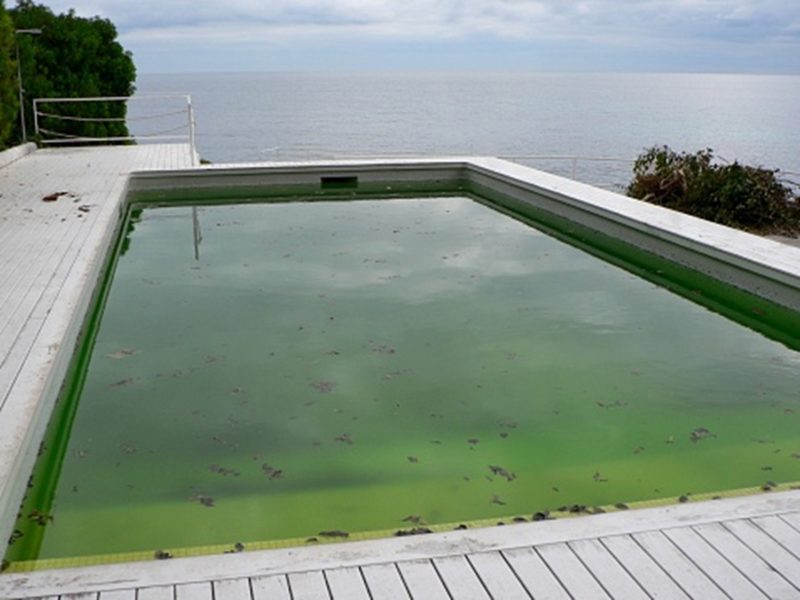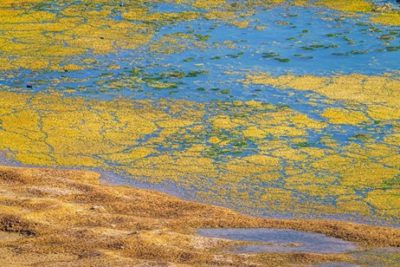How to Get Rid of Algae in Your Pool? Your swimming pools might be the highlight of your homes, but they’ll fail to amuse people if algae cloud their water. Algae can be any color, green, yellow, or black. But, one thing’s for sure, we don’t want it anywhere near our precious pools! This article will help you get rid of algae in your pool.
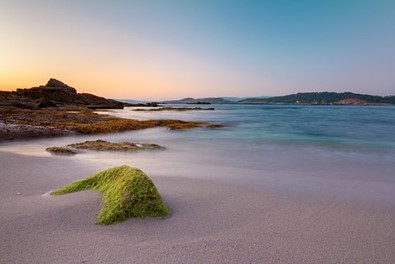
Summers are marked by recreational activities, especially related to water bodies. You’ll find a public swimming pool overflowing with people and their ducky tubes. But, who needs a public swimming pool if you have an isolated, serene pool sitting right there in your backyard?!
As enticing as the idea of a private swimming pool might sound, private swimming pools come with maintenance. There might be many maintenance issues related to a swimming pool, but one of the most prevalent issues is an algae bloom or infestation of algae in the pool.
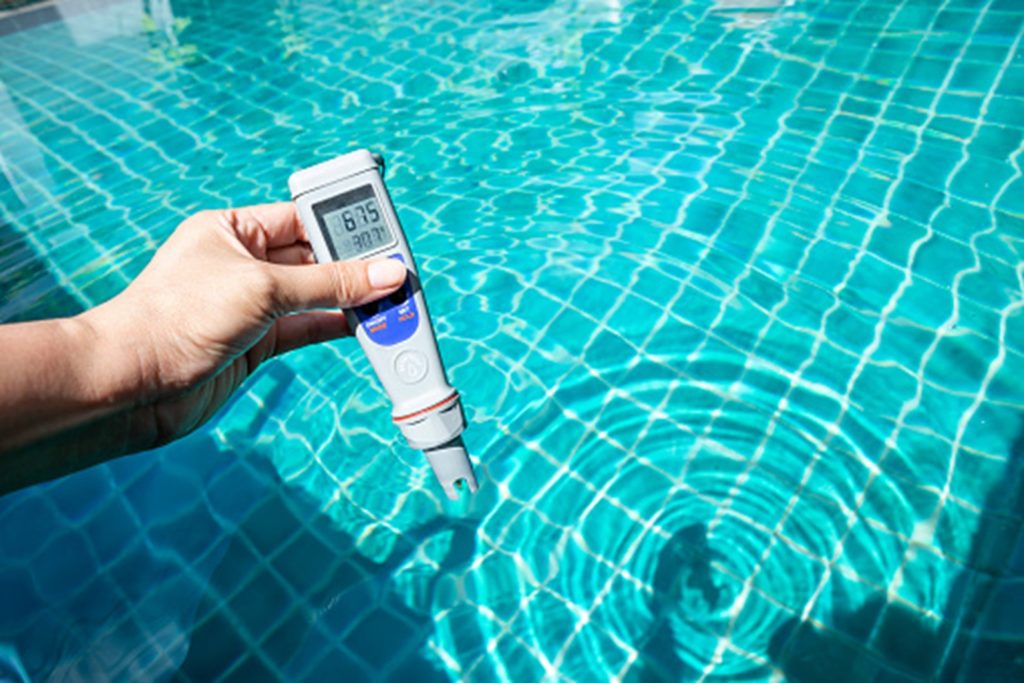
What is algae?
Algae are photosynthetic microorganisms with photosynthetic pigments like chlorophyll. They do not, however, have real roots, stems, or leaves like vascular plants. Some are unicellular, while others are multicellular. They can establish colonies as well. The majority of algae are aquatic.

What does algae look like?
Algae are a type of creature that lives in water and is very tiny. Algae grow best in favorable circumstances and resemble scum on the water’s surface. The algae can be blue-green or greenish-brown in color and has a musty or grassy odor. Algae can be slimy or not, depending on its type. Blue-green algae is typically much slimier than yellow or mustard algae.
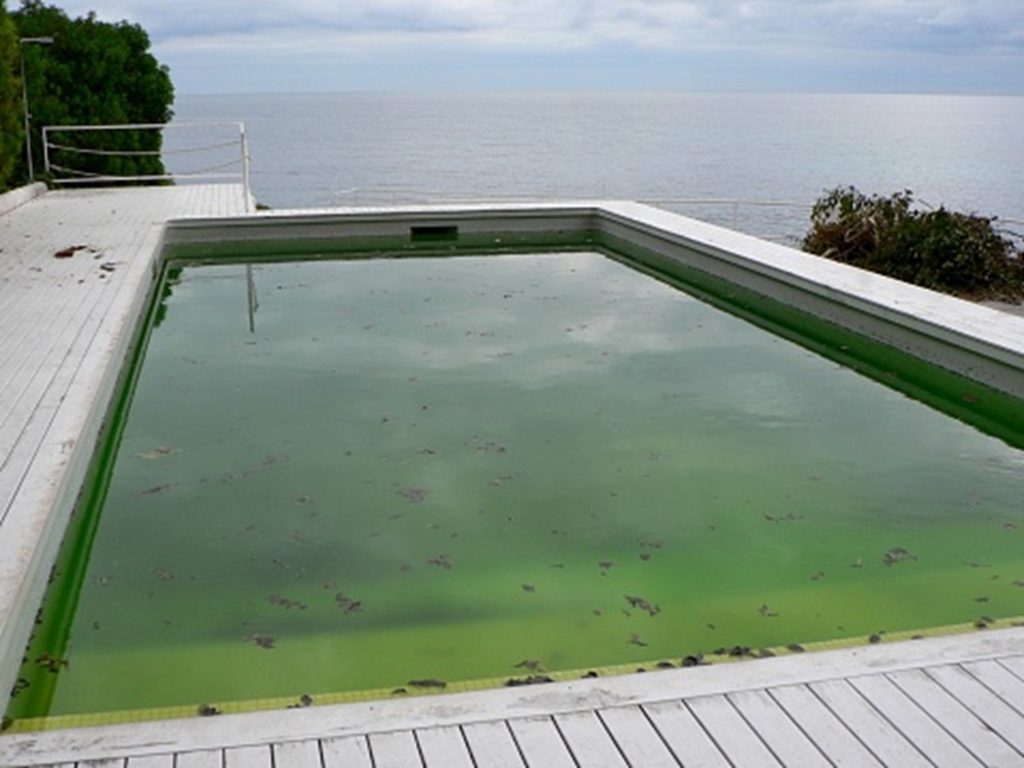
Types of algae in a swimming pool
If you think that algae has only one type – green algae, then think again! Algae come in all forms and colors; only the most common one is green algae. In your swimming pool, an algae bloom can be of any color. It can be blue-green algae, black algae, or dust-like mustard algae.
Green algae in pool
Green algae in a swimming pool are the most common type of algae. If your swimming pool lacks proper sanitization and filtration, a green algae bloom can be anticipated. Moreover, if your pool has high pH levels, it’s most likely to provide ideal living conditions for green algae to thrive.
Green pool algae will usually float on the surface of your pool water or stick to its walls or floor – it can be anywhere! If you notice that your pool has a greenish tint, it means the green algae is the culprit.
However, as abhorring as green algae looks, it is much easier to clean than other types of algae that might be infesting your swimming pool. You can easily brush green algae off and increase sanitization levels in your swimming to combat the algae bloom.
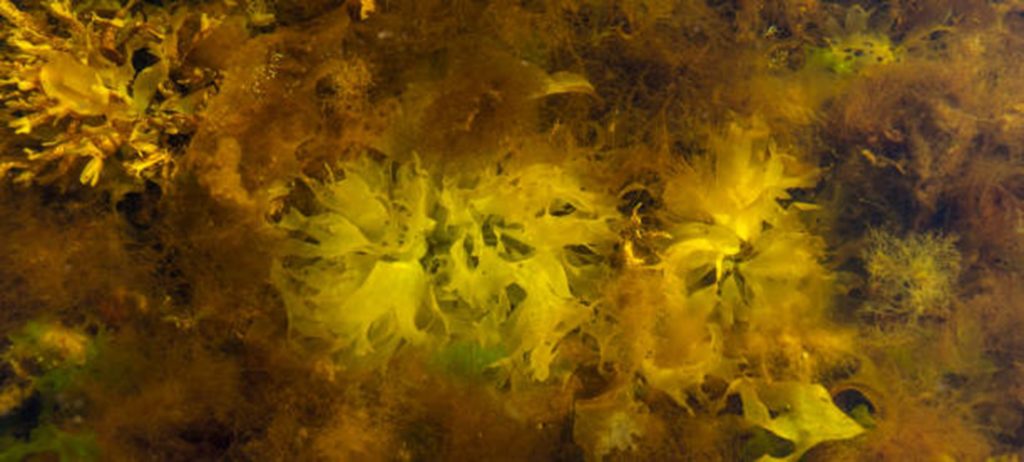
Mustard algae in pool
Mustard algae, also sometimes referred to as yellow algae, grows at the shadier side of your swimming pool, usually around the walls. Mustard algae are next to green algae in terms of commonness.
Mustard algae bear an uncanny resemblance to dust and pollen and can easily be mistaken as dust or pollen. Unlike green algae, mustard algae are much more stubborn, and getting rid of them is an arduous task.

Black algae in pool
Black algae are the most stubborn form of algae in the pool. It appears as black spots on the walls of your swimming pool. It has a potent defense mechanism and strong roots, which makes it hard to remove.
The visible portion has a protective covering, and the roots are robust, spreading deep into the plaster of your pool walls. To get rid of it, you’ll need a powerful pool brush and a lot of shocks (chlorine and acid).
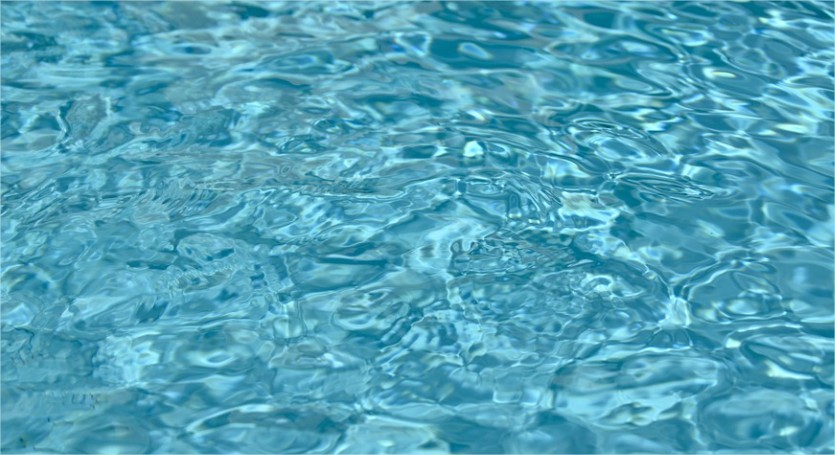
How to prevent algae from forming in my pool?
You can always get rid of algae in your pool water in the end, but it doesn’t hurt to take preventative measures to prevent algae bloom in the first place. Here’s what you can do to prevent the growth of algae in your swimming pool.
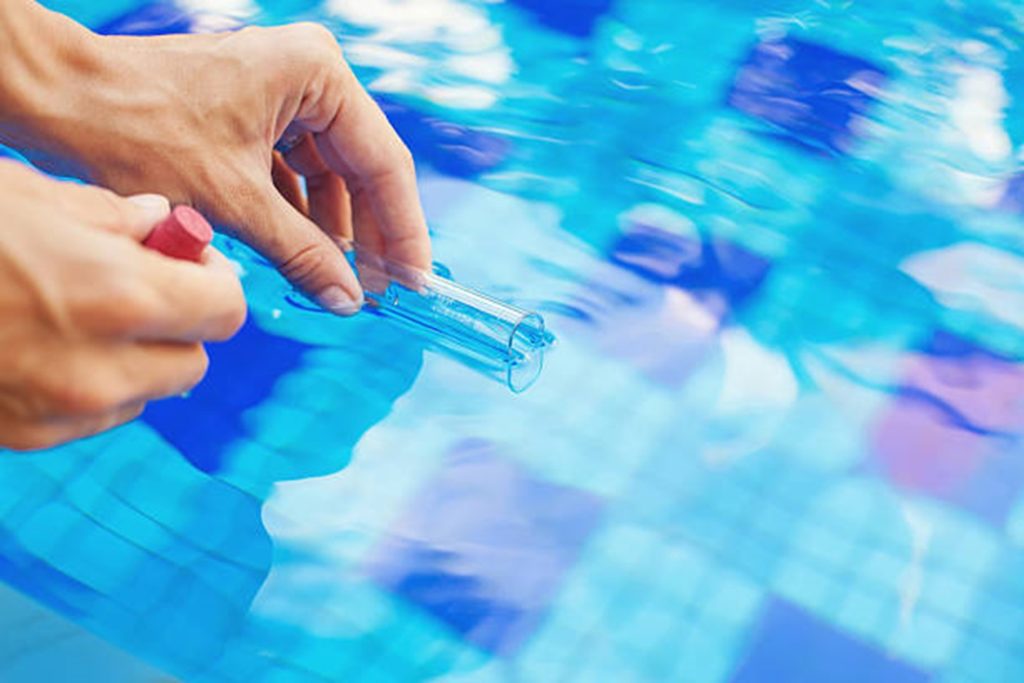
- Ensure that your swimming pool filter and pump run at least 12 hours a day.
- Check the balance of your swimming pool water frequently.
- Ensure that your pool is well-sanitized with chlorine.
- Make it a habit to shock your swimming at least once a week.
- Regularly brush the walls, steps, ladder, and floor of your swimming pool with a brush with stiff bristles.
- Skim your pool for debris and leaves regularly.
- Regularly vacuum your pool for any accumulated muck and other nasty stuff.
- Use an algaecide to combat any living conditions for algae.
- Make sure that your pool water is free from phosphates. Phosphates act like fertilizers for algae.
- Check the pH of your water regularly. You can do so using liquid test kits and swimming pool test strips. Water with a high pH allows algae to grow.
How to get rid of algae in the pool| 10 steps to get rid of algae in your swimming pool
The tips mentioned above are a proactive approach to prevent algae from growing in your pool. However, there’s no stopping the inevitable. When this happens, you need to take measures to get rid of algae in your pool. Although not complex, algae removal may take some amount of time and dedication on your part.
Here’s a step-by-step guide to getting rid of algae in your pool.
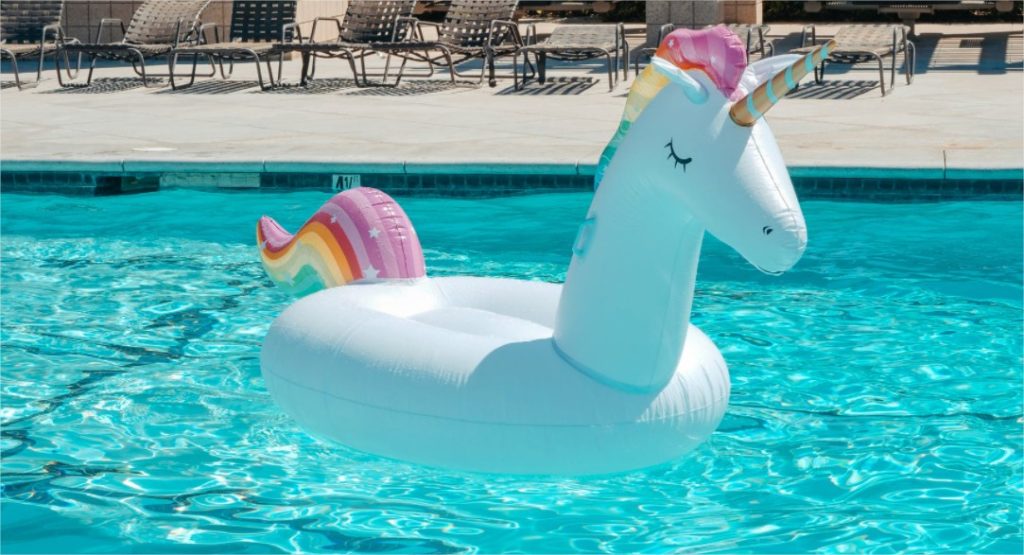
Step 1 – Check your water chemistry.
Checking your water chemistry is not only a swimming pool maintenance tip; it’s also the first step in getting rid of pool algae. You should use test kits available on the market to check your swimming pool’s pH and chlorine levels. Ideal chlorine levels are 1 ppm. In contrast, your water pH should be somewhere between 7.4 and 7.6.
Step 2 – Time to turn on your pump and filter in full-swing
When you’re done with doing the chemical tests on your pool water, it’s time to let your pool filters and pumps run for AT LEAST 24 hours. The constant water movements triggered by the pump deters an algae bloom.
Step 3 – Removing the nasty stuff.
Once 24 hours have passed, you should skim away any floating algae, debris, leaves, or other stuff. You can easily do so using a net or by removing it with your hands.
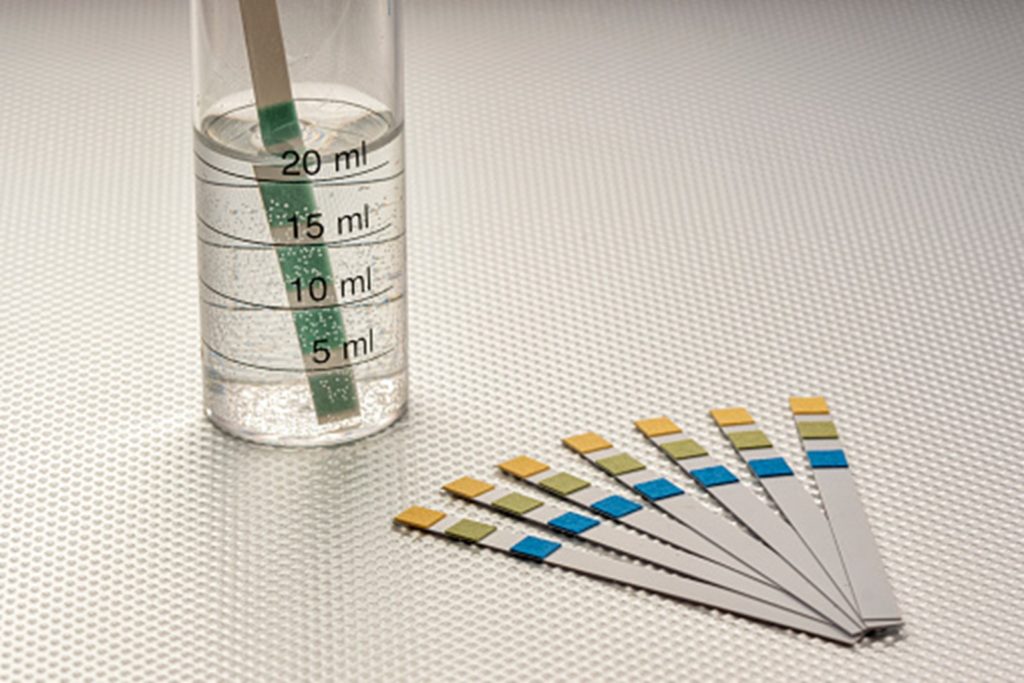
Step 4 – Brush, brush, brush!
Once you’re done with removing the floating debris, it’s time to brush the walls, steps, ladder, and floor of your swimming pool.
Pro tip: Make use of a brush that has stiff bristles.

Step 5 – Vacuum
A lot of algae and dirt will detach themselves from the body of your swimming pool once you’re done with the brushing part. By now, you’ll be seeing a lot of floating algae. Use a vacuum cleaner to suck the cretin out!
Step 6 – Swimming pool maintenance
This step is no different than your regular swimming pool maintenance routine. Turn off your pool filters, and clean them. You’ll be surprised to see the number of dead algae sitting in your filter. Give your filters a good rinse and make sure that all of the muck is out.
Step 7 – Shock your Swimming pool
Now comes the most crucial step while getting rid of algae in your pool – shocking your swimming pool. Shocking your pool once every week should be on your schedule. If you don’t do that, you’ll end up going through a much lengthier process if you have algae blooms in your pool.
Pool shock is the process of chlorinating your pool in order to kill out everything that shouldn’t be there. The amount you need to apply may vary greatly depending on the sort of algae you have. Black algae are the most bullheaded form of algae, so it might call for little extra effort and your time, usually in the form of shocking your pool water time and time again. Green algae require the least amount of shocking, with mustard algae as a close second.
Some tips to keep in mind while shocking your swimming pool:
- NEVER use stabilized chlorine to shock your pool as it hampers the ability of your sanitizer.
- Wear protective gear while shocking your pool.
- Don’t go out diving into a shocked pool until the water is crystal clear and the chlorine levels are less than 3 ppm.
- Shock your pool when the sun is out.
Step 8 – Time to brush once again
After shocking, you need to brush your pool one last time to make sure every trace of algae has been wiped out.
Step 9 – Vacuuming and cleaning your filters
After brushing, use your vacuum cleaner to suck out the loosened traces of algae, dirt, and debris.

Step 10 – The final touch
You’re almost done with the process now. Now all you need to do is clean your pool filters again before putting them back on. After that, it’s your cue to add an algaecide to prevent future algae blooms.
Once you’re done with all that, test your pool chemistry one last time before taking a dip in its newly pristine waters. The chlorine levels should be between 1 and 3 ppm. In contrast, pH levels between 7.4 and 7.7 are considered ideal. Also, the alkalinity of your water should be in the range of 80 and 140 ppm.
Ending Note
Algae bloom in your swimming pool can be a nightmare, but with the proper prevention and elimination techniques, it doesn’t have to be. Algae in a pool can easily be prevented, and if not controlled, you can quickly get rid of it; it’s no rocket science.
While regular maintenance of your swimming pool is vital, make sure you never neglect your swimming pool before problems worsen.
For now, this is it. We wish you all the luck in getting those pesky algae out of your swimming pool!
Frequently Asked Questions
How do I get rid of algae in my pool naturally?
Similar to how baking soda may be used as a spot treatment for black algae, home borax can be used to cure blue and green algae. Simply scrape away any algae that have clung to your pool’s walls with the borax, then remove it with the brush.
Does shock kill algae?
Large quantities of algae may need up to three doses of shock spread out over a 36-hour period. Water may become murky if a sufficient amount of shock is used to kill algae. This should not be an issue, and the water should clean up when the filter is run. Wait until the chlorine ppm drops below 5.0.
How long does it take to kill algae in the pool?
Algae blooms will be destroyed within 24 hours after receiving a shock dose or adding an enormous volume of liquid chlorine to raise your chlorine level above 10 ppm. For the most remarkable effects, leave your pool pump running for 24 hours after the initial shock.
What kills green algae in a pool?
Algaecide is the most effective technique to remove algae from your pool. It destroys and prevents all types of algae, including black, green, and yellow mustard algae and pink bacteria. It also has clarifying qualities, which will help keep your pool clear.
Should I drain my pool to get rid of algae?
Yes, since it saves time and money, but only if done correctly. Drain water via the filtration pump using the pool’s main drain. Alternatively, rent or borrow a pump, run the hose down the street, storm drain, and drain.
Why does my pool keep getting green algae?
Poor water balance, poor water cleanliness, inadequate water circulation, and poor water filtration can all contribute to pool algae development.
Can I put algaecide in with shock?
While stunning and applying algaecide are both efficient ways to get rid of algal, they should not be done at the same time. This is due to the fact that combining chlorine and algaecide renders both ineffective. As a result, you should shock the pool first and then wait for the chlorine levels to fall below 5 PPM.

